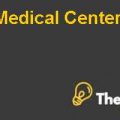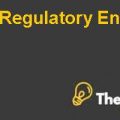Question No. 1: Search Strategy
The National Guideline Clearinghouse Database has the guidelines for all types of diseases and surgeries. Using the website of the National Guideline Clearinghouse I searched for the Otitis Media. In the search bar of the website, I searched for the guidelines of Otitis Media. It generated a number of results, showing the guidelines for both females and male, and ageing differently. To find out the best guideline that would match the given case study, I filtered out the results by choosing themale option in the gender category, and in the category of age, I chose Child (2-12 Years Old). This generated the required guidelines for me.
Question No. 2: Development of the Guideline
I have found three guidelines regarding Otitis Media, for male children ageing less than 4 years old. These guidelines along with their developers are listed below.
Guidelines Developers
1. The diagnosis and management of acute otitis media American Academy of Pediatrics
2. Otitis media University of Michigan Health System
3. Clinical practice guideline: otitis media with effusion (update) American Academy of Otolaryngology-Head and Neck Surgery Foundation
Otitis Media Harvard Case Solution & Analysis
Question No. 3: Publication of Guidelines
The first two guidelines; the diagnosis and management of acute otitis media and Otitis media are the revision of the original guidelines. The diagnosis and management of acute otitis media was first published in 2004 and later revised in March of 2014. The second guideline; otitis media, was first published in the November of 1997 and later revised on April 2013. The last guideline is original and was published in February 2016.
Question No. 4: Systematic Review of Current Best Evidence
In the field of medicine, systematic reviews play a vital role in providing a complete summary of any research question or disease. A systematic review is basically a collection of a number of different research papers that are developed in a single study. It summarizes all these papers and formulates them into a single paper, in a proper methodology. This way when all the research papers of the best evidence related to a single study are combined together, it saves time and is also cost-effective.
Question No. 5: Conflict of Interest
The total expense of formulating the guidelines was covered by the developers of the guidelines. The conflict of interest of the panel members in the last five years was assembled and before the start of the first conference all panel members were approached, and their respective conflicts were updated at every meeting and call. After analyzing the conflicts of the members the panel decided and informed the members that they can be a part of the panel if the members would remind the panel of the conflict of interest before the discussion or would recuse from the discussion about the related conflict and lastly the conflict can be beyond the financials and can be personal as well. (guideline, 2016)
Question No. 6: Quality of Evidence
Quality of Evidence is subcategorized into five types. These types are discussed below.......................
This is just a sample partical work. Please place the order on the website to get your own originally done case solution.













